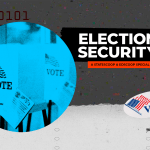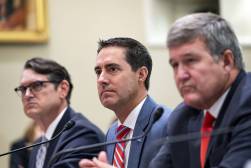How we prepared for the 2020 election during a pandemic

The 40 secretaries of state who serve as chief election officials began preparing for the 2020 election long before the clock struck midnight on New Year’s Eve. At the state and local level, months and even years go into the planning of elections.
During the years of preparation, there have been countless meetings, trainings, briefings, conferences, exercises and webinars revolving around the important task of securing our democracy. Election officials have diligently planned and prepared our offices, stakeholders, media, citizens, federal and private sector partners for safeguarding the upcoming 2020 election, understanding the absolute importance of election cybersecurity.
The thing we couldn’t foresee in all these years of planning was the COVID-19 pandemic. However, secretaries of state immediately rose to meet the unexpected challenge by increasing information sharing, activating cybersecurity staff and further bolstering the security of their systems.
Increasing information sharing
Sharing information across all levels of government in a timely, dynamic manner has been something the entire elections community has been perfecting for years. The 2018 establishment of the Election Infrastructure Information Sharing and Analysis Center and the 2017 establishment of the Election Infrastructure Subsector Government Coordinating Council are just two examples.
Serving as a cybersecurity information hub, the EI-ISAC consists of all 50 states and thousands of local election offices as members. This allows election officials across the country to stay connected and manage risks to ensure consistent communication even in the most uncertain times.
The EIS-GCC has also been crucial to effective communications, while helping guide collaborative election security endeavors around the pandemic. For instance, a COVID-19 Joint Working Group was created with the Sector Coordinating Council, the EIS-GCC’s private sector counterpart, to provide voluntary resources to help state and local election officials assess risk, secure their systems and respond to any incidents involving their elections systems.
Information sharing through our organization, the National Association of Secretaries of State has also increased during the pandemic. Our elections committee has been holding weekly calls so members can ask each other questions and learn from one another during this unprecedented time. NASS has held monthly “Tech Talks” for secretary of state IT staff and has provided virtual cybersecurity and election security programming through the first-ever NASS Virtual Summer Conference. Also, the Cybersecurity Committee just released an updated version of the NASS Cybersecurity Resource Guide.
Activating cybersecurity staff
Since 2016, secretaries of state have built robust information technology and security teams that work daily to secure and monitor their systems. Their teams have remained focused on securing election systems as their top priority throughout COVID-19.
For instance, in the midst of the pandemic Minnesota implemented a cyber navigator program to aid its local officials with cybersecurity assistance, nimbly adjusting pre-COVID-19 plans in order to meet virtually.
Other states, including Colorado, Florida, Illinois, Iowa, Massachusetts and New York, operate similar cybersecurity liaison programs through which cybersecurity experts provide direct assistance to local election offices. These services have not halted during the pandemic, but instead shifted to more virtual interactions.
Further bolstering security of systems
Protecting systems such as statewide voter registration databases, election websites and web applications is even more critical during the pandemic, especially as election processes and information changes in response to COVID-19. As such, secretary of state offices have not slowed down their efforts to further secure and build resilience into these systems.
Numerous states have implemented multi-factor authentication for access to their statewide voter registration and election management systems, even upgrading their protections and protocols during the pandemic to increase security while many work remotely.
Although 2020 has been unexpected in many ways, the one thing you can always count on is for election officials to come together in a nonpartisan and bipartisan manner to secure elections, share practices and learn from each other. We hope all voters will continue to have confidence in the security and integrity of elections, and will vote this November.
Maggie Toulouse Oliver is the president of the National Association of Secretaries of State, NASS cybersecurity committee co-chair and secretary of state for New Mexico.
Paul Pate is the immediate-past president of NASS, NASS cybersecurity committee co-chair and secretary of state for Iowa.

This story was featured in StateScoop Special Report: Election Security (2020)






